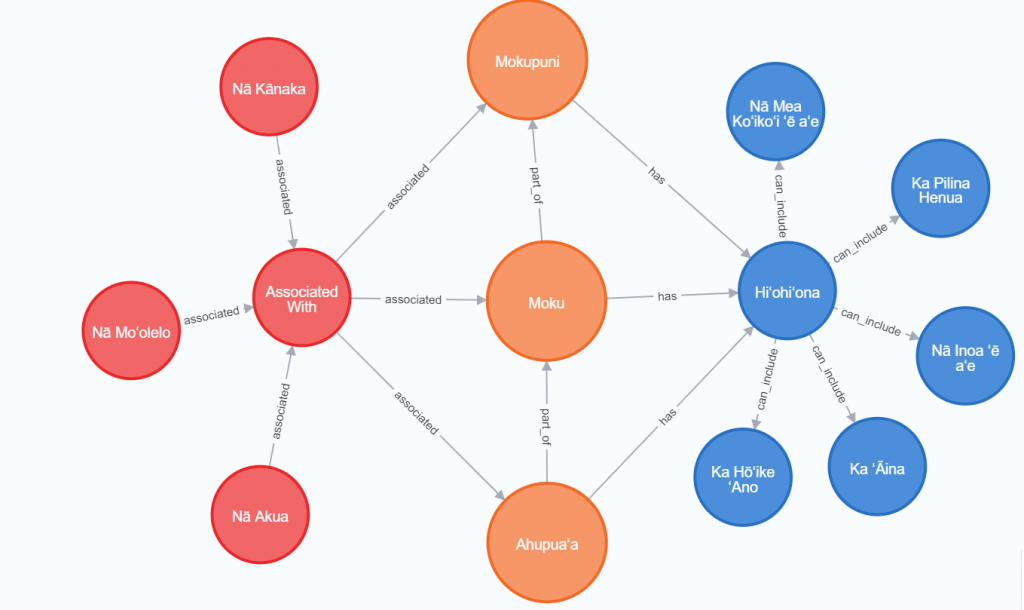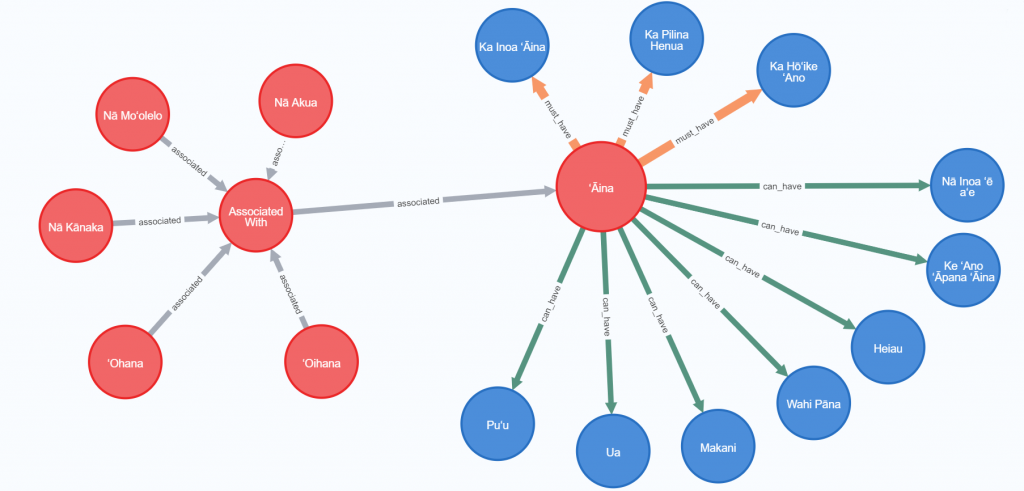Knowledge, especially the sorts of knowledge represented in cataloging and metadata systems, is often abstract. This abstraction can make it difficult to build a common understanding. My role on this team is to take abstract systems and create models to help ground abstract discussions by providing a common (visual) focus. While these visualizations are flawed and incomplete, their very incompleteness can be a tool for developing a more refined system of knowledge organization.
Here is an early visualization of ʻāina structure, showing the relationship between different ʻāina divisions, other beings and subjects associated with individual ʻāina, and the features that ʻāina can have. This visualization was based on initial discussions of the important relationships our Knowledge Organization System needs to capture, as well as the important features of ʻāina that need to be recorded.

While this visualization is useful as far as it goes, it has some pretty major issues. The list of subjects that can be associated with ʻāina is incomplete. For example, it omits things like ʻoihana (occupations, trades, or cultural practices) that might be associated with a specific place, and it treats kānaka as isolated individuals who only ever have an individual (not a collective) relationship with ʻāina. Similarly, the list of features that ʻāina can have is incomplete. It doesn’t include features like Wahi Pana (notable places), Ua (named rains), or the location of Heiau. Additionally, this list of features makes no distinction between features that an ʻāina can have and those it must have.
Using the flaws in visualization as a springboard, we created a revised visualization of ʻāina and its features and relationships.

This visualization is better, and fixes many of the flaws with the initial visualization. Itʻs still far from perfect; it doesn’t show the complex and varied relationships Kānaka can have to ‘āina, it removes the levels of land division for the sake of simplicity, and it still lacks both needed associations and features. These visualizations are always incomplete and cannot capture the complexity of Hawaiian knowledge. However their very incompleteness can be a tool for understanding. Exploring the gaps and inconsistencies within these visualizations can help build a shared interpretation of abstract concepts, which in turn leads to better visualizations which can be used to further clarify our understandings.
